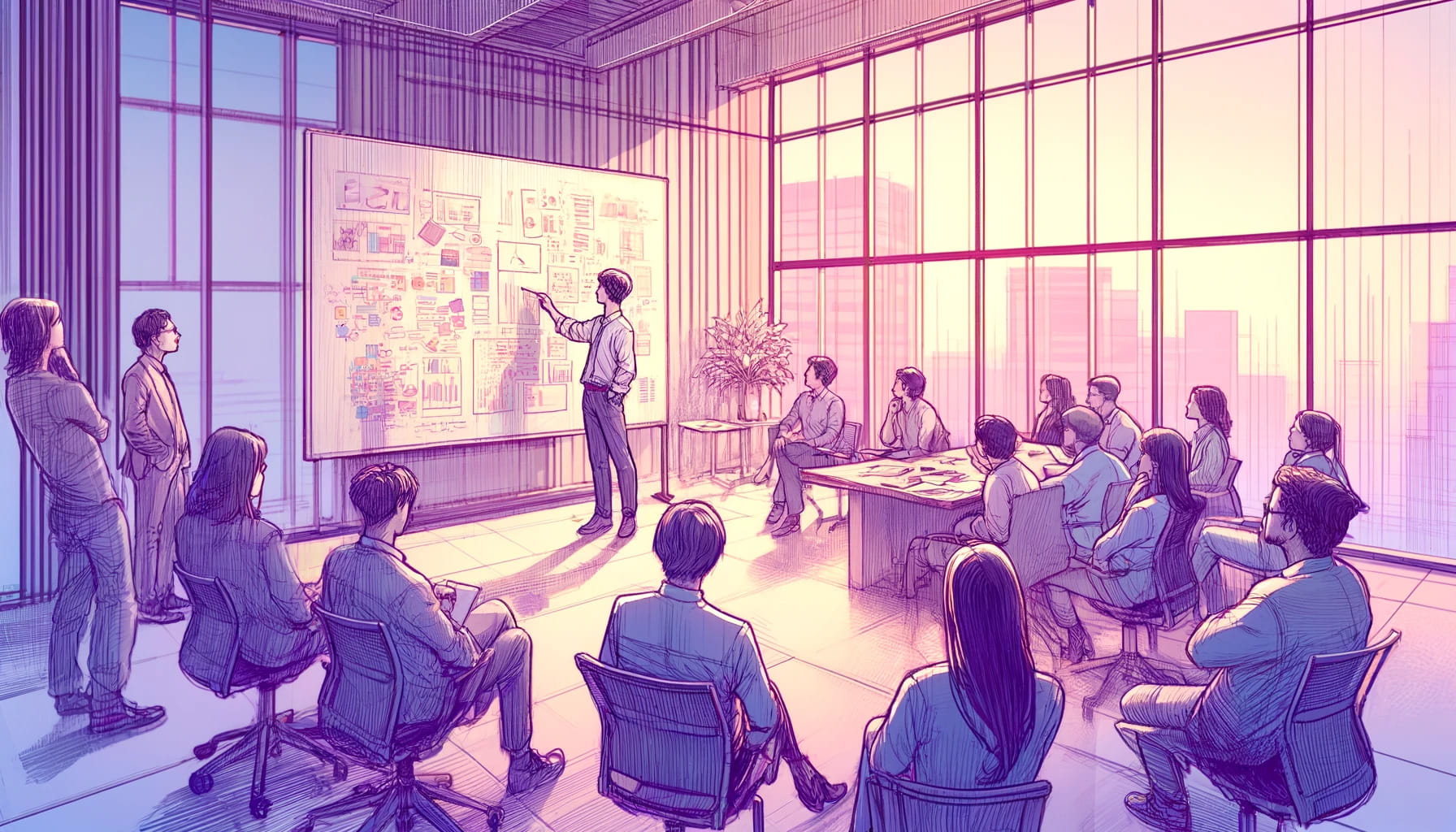In 2024, the landscape of User Experience (UX) Design continues to evolve rapidly, driven by technological advancements, changing user expectations, and shifts in industry practices. This article provides a detailed analysis of the current state of UX design, comparing it with trends from previous years, and highlighting key metrics that underline these changes. Designed for the product community, this discussion aims to encapsulate both the macro and micro shifts that are shaping the industry.
Technology Trends
- AI Integration in Personalization
One of the most significant trends in UX design in 2024 is the deep integration of Artificial Intelligence (AI) to craft personalized user experiences. Unlike the broader applications seen in past years, current AI implementations are much more sophisticated. They are capable of analyzing user behavior on a granular level, enabling designs that adapt in real-time to user needs. This level of personalization was less prevalent in earlier years when AI was used more for analytical purposes than real-time adaptation. - The Rise of VR/AR Interfaces
Virtual Reality (VR) and Augmented Reality (AR) have moved from niche to mainstream in 2024. The Global XR Market Report notes a 30% increase in the adoption of VR/AR technologies in UX design compared to 2021. This shift is particularly noticeable in industries like retail, real estate, and education, where immersive experiences offer a substantial value proposition by enhancing user engagement and satisfaction. - Voice User Interfaces (VUI) and Natural Language Processing (NLP)
Voice interactions have become more prevalent, with VUIs now a common feature in many applications. Thanks to advances in NLP, devices understand and process human speech with greater accuracy than ever before. A study by Voicebot.ai revealed that 40% of internet users in the U.S. use voice search daily in 2024, up from 25% in 2020, indicating a significant shift towards voice-based UX.
Industry Practices
- Focus on Accessibility and Inclusive Design
There has been a robust shift towards more accessible and inclusive designs. The Web Accessibility Initiative (WAI) guidelines have been updated frequently, reflecting a growing emphasis on making digital experiences usable for everyone, including people with disabilities. In 2024, failing to design with accessibility in mind not only alienates a significant portion of the population but also risks non-compliance with increasingly stringent legal standards. - Agile UX Methodologies
The adoption of Agile methodologies in UX design processes has increased. The Agile framework, which promotes fast iteration and responsiveness to change, is now utilized by over 70% of design teams, compared to approximately 50% in 2019. This method has proven effective in keeping up with the rapid pace of technological changes and user feedback. - Ethical Design and Data Privacy
With data breaches and privacy concerns on the rise, there has been a concerted effort in the UX community to prioritize ethical design principles. A survey by the Design Management Institute highlighted that 85% of companies now have strict guidelines for ethical user data handling, marking a significant increase from 65% in 2020.
Tools and Frameworks
- Collaborative Design Tools
Figma and Adobe XD continue to dominate the UX design tool landscape, largely due to their robust collaborative features that support real-time co-design across distributed teams. These tools have become indispensable, with user statistics showing a 50% increase in monthly active users since 2021. - Prototyping and User Testing Integration
The integration of prototyping tools with user testing feedback loops has improved, helping designers to quickly iterate based on real user interactions. This integration allows for a more dynamic design process that is responsive to user needs and behaviors. - AI-Driven Design Assistants
The emergence of AI-driven design assistants has been a game changer, automating routine tasks and suggesting design improvements based on best practices and user data. This not only speeds up the design process but also helps maintain consistency across different designs. - The Use of Session Replay Tools
A noteworthy trend in 2024 is the increased use of session replay tools in UX design. These tools record users’ interactions with websites and apps, providing designers and developers with a video-like playback. This functionality offers invaluable insights into user behavior, navigation difficulties, and unexpected usage patterns. The insights gained from session replay tools facilitate more user-centered design improvements and troubleshooting, ensuring that websites and applications are optimized for the best user experience. According to industry reports, the use of these tools has increased by over 50% in the last two years, reflecting their growing importance in the UX toolkit.
User Behavior
- Cross-Platform Experiences
Users in 2024 expect seamless experiences across all platforms. The demand for cross-platform design has led to a more holistic approach in UX practices, ensuring that users have a consistent and intuitive experience whether they are interacting via mobile, desktop, or any other device. - Demand for Customization
There is an increased demand for customization options within apps and websites. Users want to control how they interact with interfaces, and they appreciate being able to personalize aspects of their digital experience. - Privacy and Security Expectations
User awareness about privacy and security has never been higher. UX designs now often include more transparent user data management features, reflecting this shift in user expectations.
In conclusion, UX design in 2024 is characterized by rapid technological adoption, a deeper understanding of user needs, and a stronger commitment to ethical and inclusive design practices. These shifts are not only enhancing the user experience but are also setting new standards for what users expect from their digital interactions. The design community must continue to adapt to these changes, ensuring that their skills and methodologies remain relevant in an ever-evolving landscape.


